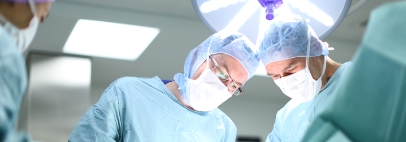Recognising and treating fibroids individually
Surgical removal of the fibroid
The larger a fibroid is, the more extensive the operation to remove it. It is therefore important that women suffering from abdominal pain or an unfulfilled desire to have children contact our specialists as soon as possible. In this way, the operation can be performed under the best possible conditions and with the greatest possible care.
Today, minimally invasive surgical techniques are used to remove fibroids. The fibroid is removed through a uterine or abdominal endoscopy. This means that patients experience little pain, recover quickly from the procedure and do not suffer any major scars. Bethesda Hospital has a great deal of expertise in the field of modern, gentle surgical procedures and is one of the top addresses for such operations in north-west Switzerland.
Hormonal treatment of fibroids
In the case of very heavy menstrual bleeding caused by a fibroid, this can be reduced by hormone therapy. This usually has no direct effect on the fibroid, but can sometimes significantly improve the symptoms caused by it. However, this therapy is only suitable for women who no longer wish to have children and is mostly used in older women shortly before the menopause.
Other treatment options for fibroids
- Sonata® treatment: This new form of therapy is currently only carried out at specialised centres. The Clinic for Gynaecology at Bethesda Hospital is currently the only centre in north-western Switzerland to offer it. In Sonata® treatment, the fibroid is heated in the operating theatre under ultrasound guidance using a special device, causing it to shrink. This procedure is known as radiofrequency ablation or Sonata® therapy and is currently regarded as the gentlest method of treating fibroids surgically.
- Myoma embolisation: In this therapy, the blood vessels that supply the myoma are sealed ("embolised"). This is done using small beads that are inserted via a catheter through the inguinal artery. This causes the fibroid to die.

.jpg)
.jpg)

